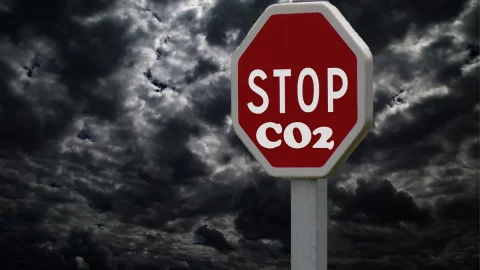In the 2022 Italian GDP grew by 3,7% compared to 2021, while the deficit it stood at 8%. The Istat communicates it.
Istat revises GDP 2022 downwards a + 3,7%
The figure released today (+3,7%) is lower than the estimates released by Istat on 31 January which indicated economic growth of 3,9%. However, it is in line with the predictions of the Nadef which last November had set 2022 growth at 3,7%.
“In 2022 the Italian economy recorded strong growth, but lower than that of 2021”, comments the National Institute of Statistics, specifying that last year the GDP at market prices was equal to 1.909.154 million euro current, with an increase of 6,8% over the previous year.
“It was above all the economy that drove the increase in GDP (+3,7%). national demand excluding inventories, while foreign demand and the change in inventories provided negative contributions”, explains Istat. In detail, national demand net of inventories contributed positively to the GDP trend by 4,6 percentage points, while the contribution of net foreign demand it was negative by 0,5 points and that of the change in inventories by 0,4 points.
And again: last year the internal question it recorded, in terms of volume, an increase of 9,4% in gross fixed investments and 3,5% in national final consumption. Among the individual items, “expenditure for the consumption of goods increased by 2,4% and that for services by 8,8%. The most significant increases, in terms of volume, are found in the following consumption functions: expenditure on hotels and restaurants (+26,3%), on recreation and culture (+19,6%) and on clothing and footwear (+14,8 %). There are negative variations in expenditure on food and non-alcoholic beverages (-3,7%), on education (-1,2%) and on health services (-0,4%)". The post-Covid recovery has therefore pushed Italy into 2022 as well.
As regards flows with foreign countries, exportsi of goods and services rose by 9,4% eland imports of 11,8%.
Il value added recorded volume increases of 10,2% in construction and 4,8% in services activities. However, Istat noted contractions of 1,8% in agriculture, forestry and fishing and 0,1% in industry in the strict sense.
Istat: deficit rises to 8%, Superbonus effect
The new Eurostat indications that lead to the immediate accounting of the deficit linked to tax credits accrued by taxpayers for building works, Superbonus in primis, weigh on Italy. In the 2022 Italian deficit/GDP ratio it stood at 8%. In the Nadef, the Government had forecast a deficit of 5,6%. What weighed on the increase, underlines Istat, was precisely the impact of the tax credits, and above all of the Super bonus. The same item also led to a worsening revision of the 2020 and 2021 data, equal to -0,2% and -1,8% respectively. As a percentage, in 2020 the deficit therefore stood at 9,7% of GDP (from 9,5%) and in 2021 at 9,0% (from 7,2%).
In the light of the new interpretative framework and following the outcome of the methodological investigations conducted jointly by Istat and Eurostat, explains the Institute, "the accounting treatment of the 'Super bonus 110%' and of the so-called 'Facade bonus' starting from the estimate year 2020. Both tax credits are now classified as 'payable' tax credits, and recorded in the consolidated general government account as expenses for the full amount”. In previous estimates, both concessions had been classified as 'non-payable' tax credits and were therefore recorded as less revenue in the year of use of the credit (therefore, as lesser tax revenue).
Debt falls, tax burden stable
Lastly, the Istat surveys on Italian accounting indicate a deficit/GDP ratio of 2022% for 144,7 against 149,8% in 2021. The figure in this case is better than the Nadef estimates which indicated for last year a debt at 145,7% of GDP.
In 2022, on the other hand, the tax burden on Italian taxpayers: in 2021 it was 43,4% of GDP, last year it was 43,5%.
Today's other macro data: SME manufacturing, good news
During the morning, the manufacturing PMI indices for February were also published.
In 'Eurozone, in February the manufacturing PMI fell to a two-month low of 48,5 from 48,8 in January according to data released by S&P Global. The sector therefore remains in negative territory, given that a figure below 50 indicates a contraction. The index was dragged down by the sub-index of supplier average delivery times and purchasing inventories. However S&P Global sees the glass half full: “A marginal expansion in production reported by Eurozone producers in February is good news as it represents the first increase since last May and a further improvement in the underlying trend from the low recorded in October. The brighter manufacturing picture first reflects a large-scale improvement in supply chains, with deliveries of inputs to factories increasing on average to a level not seen since 2009. Fewer supply shortages and delays have eased a higher, enabling companies to address the backlog of work built up during the pandemic,” said Chris Williamson, chief business economist at S&P Global Market Intelligence.
As for individual countries, among the 8 countries monitored by the survey, four recorded expanding manufacturing PMIs. There is among them Italy, where in February the PMI index rose from 50,4 points recorded in January to 52 points. A better result than expectations which indicated 50,8 points. In February, at Germany the PMI manufacturing index dropped to a three-month low at 46,3 points from 47,3 last January. Forecasts indicated 46,5 points. In Spain the PMI manufacturing index marks 50,7 points compared to 48,4 points in the previous month of January. In the UK, on the other hand, the PMI index rose to 49,3 points in February from 47 points in January, also improving slightly compared to the first estimate of 49,2 points.





